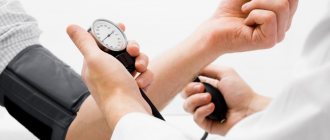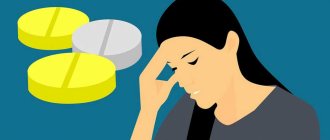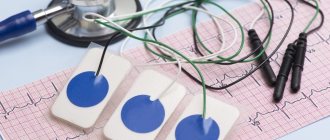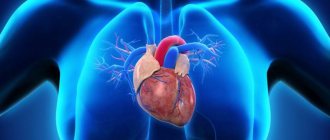Pain Treatment Center
Alekseeva
Oksana Alexandrovna
23 years of experience
Doctor, highest qualification category, member of the European Association of Neurologists, Russian Interregional Society for the Study of Pain (ROIB), Association of Interdisciplinary Medicine. Has experience working in hospital and outpatient services. He has seven published works on neurology.
Make an appointment
In ensuring the normal functioning of the human body, one of the key positions is occupied by the autonomic nervous system (ANS) - a complex of nervous structures responsible for maintaining a constant internal environment (homeostasis). The efforts of the ANS regulate the functioning of the circulatory and lymphatic systems, internal organs, and endocrine glands. The ANS itself is part of the nervous system (NS), but has an important feature - autonomy, that is, a person cannot control it with his own will.
Various disorders in the functioning of the ANS are called vegetative-vascular dystonia (VSD). This term does not mean a separate disease itself, but a syndrome - a condition caused by diseases of certain organs and systems (mental or somatic pathologies, hormonal imbalances).
Main symptoms and signs
The manifestations of VSD are diverse; the general list includes over several dozen items, but patients experience only a few of them (usually from 5 to 20) in different combinations. An important point: with VSD, there is a combination of several symptoms that appear simultaneously, but in the complete absence of organic disorders. A separate manifestation of any of these signs is not a reason for diagnosing vegetative-vascular dystonia, since it usually indicates a specific pathology.
Doctors distinguish several forms of VSD, classifying them on the basis of identifying relatively typical sets of symptoms that resemble the course of certain pathologies of organs or systems.
Respiratory form of VSD
Respiratory vegetative-vascular dystonia is the most common. The patient complains of the inability to take a deep breath, is afraid of suffocating, gasps for air, feels soreness, tightness in the throat, heaviness or pain in the chest, and coughs frequently.
Tachycardial form
Complaints of rapid heartbeat (tachycardia), irregular heart rhythm, sensation of vascular pulsation and heat in the temples and neck. It should not be confused with a similar picture with arrhythmia, paroxysmal tachycardia.
Cardiological form
In the area of the heart, pain of a different nature is noted (long-term aching or sharp, sharp), without a clear localization. During an attack of cardiac vegetative-vascular dystonia, the patient is anxious and breathes heavily. The pain lasts longer than with cardiovascular diseases (angina pectoris, myocardial infarction), does not depend on physical activity and is not relieved by appropriate medications (validol, nitroglycerin and others).
Hypotonic form
Characterized by dizziness, darkening of the eyes, sudden perspiration on the forehead, sweating, weakness, cold palms. Blood pressure drops briefly to 90/60 or below.
Hypertensive form
During an attack, tachycardia and heart pain are observed against the background of a short-term increase in blood pressure. The main difference from real hypertension: the pressure does not exceed 150/90.
Asthenic form
Performance decreases, complaints of fatigue, weakness, inability to concentrate, and sometimes body temperature rises slightly. Tremor (shaking in the hands) is possible, especially with the slightest physical exertion or a stressful situation. Irritability for no apparent reason or due to insignificant reasons, tearfulness.
Visceral form
Manifested by symptoms from the gastrointestinal tract (functioning disorder, nausea, diarrhea, vomiting, irritable bowel syndrome).
Mixed form
It combines certain signs characteristic of all the above forms of VSD, in arbitrary combinations.
Sometimes patients experience acute manifestations of symptoms, so-called attacks of dystonia or vegetative crises. An attack of VSD is characterized by sudden, spontaneous and rapid development, regardless of the circumstances. It can happen both during physical activity or a stressful situation, and at rest or sleep; alone or in a crowded place. Patients are afraid of suffocation, fear of death from respiratory or cardiac arrest, some feel feverish, others feel cold.
Separately, it is worth mentioning pre-syncope and fainting. They can have different origins; based on trigger mechanisms, they are distinguished:
- psycho-emotional - as a result of experiences, fear, reaction to the sight of blood;
- orthostatic - due to a sudden change in position, usually when abruptly getting up from a chair or bed;
- hypotonic – due to a sharp decrease in blood pressure.
Loss of consciousness is usually short-lived, lasting 1-3 minutes, the patient quickly comes to his senses. A history of fainting may indicate more severe pathologies, such as adrenal or cardiovascular insufficiency, nephropathy, or diabetes mellitus.
With such an impressive range of complaints, patients often do not experience any pathological changes in the structure or functioning of organs and systems. They often experience fear of developing a serious pathology, attributing to themselves some kind of disease based on similar signs. So, some fear paralysis due to mild numbness of the limbs or a heart attack due to chest pain.
Do you have symptoms of vegetative-vascular dystonia (VSD)?
Only a doctor can accurately diagnose the disease. Don't delay your consultation - call
Sudden vegetative-vascular attack
The so-called “vegetative-vascular crises”, which in practice occur like panic attacks, deserve special attention. The sudden onset of feelings of fear and anxiety is accompanied by severe somatic symptoms (palpitations, inability to breathe). They are extremely difficult for patients to tolerate and lead to complete social maladjustment. Moreover, a person is constantly in painful anticipation of a second attack.
In some patients, the attack appears suddenly. Others note a clear relationship with potentially threatening or stressful situations. This could be being in society, a cramped room or space, exciting news, etc.
In addition to severe anxiety and fear, the patient experiences palpitations, a lump in the throat, a feeling of lack of air and the inability to breathe. Choking, dizziness, increased heart rate, as well as disorientation in space and time lead to a feeling of fear of death. A panic attack often causes an ambulance to be called.
Diagnostics
To begin with, the doctor, during a conversation with the patient, collects a detailed anamnesis - finds out the complaints, their nature, frequency of occurrence, the presence of a hereditary factor (are there people in the family who suffer from confirmed VSD).
Then a general examination is carried out, attention is paid to the patient’s behavior and his emotional background.
Due to the presence of symptoms similar to those of various other diseases (arrhythmia, hypertension, pathologies of the thyroid gland, gastritis, etc.), each patient with suspected VSD must undergo a detailed therapeutic examination in a clinical setting. To confirm the diagnosis of VSD, it is necessary to absolutely exclude diseases with similar symptoms. For this purpose, laboratory tests are prescribed:
- general blood analysis;
- general urine analysis;
- liver and kidney function indicators;
- analysis of thyroid hormone levels;
- clarifying tests at the discretion of the doctor.
Next, a referral is given for instrumental examinations, of which the most frequently used are:
- electrocardiography (ECG);
- echocardiography;
- 24-hour Holter blood pressure monitoring;
- fibrogastroduodenoscopy;
- Ultrasound of the abdominal organs, kidneys, neck vessels, thyroid gland;
- chest x-ray;
- spirometry;
- bicycle ergometry.
Sometimes the doctor requires additional diagnostic methods, such as computed tomography (CT), magnetic resonance imaging (MRI), electroencephalography, colonoscopy and others. Various functional tests are also carried out (psycho-emotional, orthostatic, physical exercise, pharmacological).
general information
The term “vegetative-vascular dystonia” is currently not included in the International Classification of Diseases. Instead, the diagnosis “somatoform autonomic dysfunction of the nervous system” is used. In addition, a number of individual manifestations are classified as independent diseases. In our country, the old terminology is more often used.
The autonomic nervous system (ANS) is responsible for regulating the basic processes occurring inside the human body. Vital functions are under its control:
- breath;
- heart rate;
- tone of blood vessels and hollow organs;
- secretion of saliva, sweat, hormones;
- digestion of food;
- liver and kidney function, etc.
A person cannot control the functioning of the autonomic nervous system, which is why it is also called the autonomic nervous system. The functioning of various departments is regulated by a complex feedback system and also depends on the level of hormones. Failures in this mechanism lead to disruptions in the functioning of internal organs.
Make an appointment
Causes of occurrence and development
The etiology of VSD, as well as its symptoms, is extremely diverse. Among the main reasons, doctors name:
- pathological changes that occurred during pregnancy or childbirth (intrauterine hypoxia, infectious process, birth injuries, etc.);
- changes in hormonal levels (during puberty or during hormonal therapy);
- hereditary tendency (presence of autonomic disorders in close relatives);
- traumatic brain injuries of any severity;
- traumatic stressful situation, frequent psycho-emotional stress;
- high mental stress;
- excessive, or conversely, insufficient physical activity;
- toxic effects of certain substances;
- unbalanced, irregular nutrition;
- long-term course of chronic diseases (diabetes mellitus, hypertension, coronary heart disease, bronchial asthma, hypo- and hyperthyroidism, gastric ulcer, etc.);
- chronic lack of sleep, sleep disorder;
- sudden changes in weather conditions or prolonged stay in a place with severe climatic conditions;
- the presence of foci of infectious agents (chronic sinusitis, rhinitis, otitis, tonsillitis, etc.);
- bad habits (smoking, alcoholism, drug addiction).
There are certain risk groups, people from whom are more likely than others to develop VSD: people who are underweight or overweight, have low resistance to stress, and occupy responsible positions; girls during puberty, women during pregnancy and menopause.
Treatment
Therapeutic measures consist of a set of effective methods, each of which is selected individually. Since most of the occurrences of VSD occur due to stress, it makes sense to pay attention to ways to combat them:
- normalization of sleep;
- rejection of bad habits;
- building an adequate work and rest regime, if necessary, the issue of changing jobs is considered;
- nutritious nutrition in compliance with the meal schedule;
- performing special sets of physical exercises, therapeutic exercises, yoga;
- work with a psychologist (individual or group classes, psychological trainings, consultations);
- physiotherapeutic procedures (massage, electrophoresis, contrast and therapeutic showers, etc.);
- Spa treatment.
All of the above methods are quite effective; when used, not only the disappearance of VSD symptoms is noted, but also an overall positive effect on the body as a whole.
Prevention
Timely detection, treatment and consistent prevention lead to the disappearance or significant reduction of the main manifestations of vegetative-vascular dystonia (in 80-90% of cases). A full range of measures allows you to restore the body’s adaptive capabilities. A significant role in this is played by lifestyle correction, which includes normalizing the work regime, eliminating physical inactivity, providing daily dosed physical activity, limiting excessive emotional influences, and proper nutrition. An integral component of the prevention of vegetative-vascular dystonia is rest. It is extremely important to travel outside the city regularly. The best option would be to undergo treatment in a sanatorium, a stay in which not only allows you to fully relax from constant physical and psycho-emotional stress, but also provides the opportunity to undergo special procedures in one place.
If you are looking for a way to effectively treat and prevent VSD or want to undergo a comprehensive examination, contact the ABC-Medicine clinic. To contact specialists, dial our Moscow number +7.
Drug therapy for VSD
Prescription of medications is resorted to in case of ineffectiveness of non-drug measures. Treatment of VSD involves the use of medications strictly as prescribed by the doctor. Only a specialist determines the necessary drugs, their dosage and frequency of administration in each specific case. Among the main groups of medications are:
- sedatives of plant origin (normalize sleep, have a mild and effective effect);
- antidepressants – reduce anxiety, relieve headaches of varying intensity and duration;
- tonic and restorative drugs (improve tone, increase resistance to stress, physical and mental stress);
- metabolic agents – improve and normalize metabolic processes in the body, in particular in the brain and nervous system;
- tranquilizers - prescribed with caution, as they have clear indications and many side effects;
- microelements and vitamins;
- drugs aimed at eliminating various specific symptoms and their causes (hypotensive, antiarrhythmic, prokinetics, antispasmodics, etc.).
The patient must understand that VSD does not belong to the category of severe pathologies. With proper treatment and strict adherence to medical recommendations, recovery is guaranteed. The right attitude towards recovery plays an important role, when a person is not afraid of the manifestations of dystonia, but strives to overcome them. This is especially true for attacks of anxiety, restlessness, and various phobias - as soon as the groundlessness of such fears is realized, they gradually disappear forever.
Therefore, it is very important not to be afraid to talk about the problem. Sometimes patients are embarrassed by this and are in a vicious circle when they cannot cope with the problem on their own, but do not dare to visit a doctor. And it’s completely in vain, because already during a conversation with a specialist it turns out that it is much easier to cope with the situation together, moreover, the prognosis is favorable.
What is VSD
The autonomic nervous system, also called the autonomic nervous system, is part of the nervous system of the human body. It is responsible for controlling the activity of internal organs, metabolic processes occurring in the body, the functioning of blood and lymphatic vessels, as well as the activity of the endocrine glands. Thus, the autonomic nervous system plays an important role in maintaining homeostasis (constancy of the internal environment) and adaptation to changing environmental conditions.
The autonomic nervous system is responsible for the innervation of the entire body, organs and tissues. Moreover, its work is in no way subordinate to the will of a person, but is controlled independently of desires by the cerebral cortex. That is, a person cannot voluntarily stop the heart or influence the speed of intestinal peristalsis.
Autonomic nerve centers are also located in the brain stem, hypothalamus and spinal cord. Therefore, any disturbances in these organs are directly reflected in the quality of functioning of the autonomic nervous system, and can lead to the development of autonomic disorders.
Thus, all vital processes of the body are under the control of the autonomic nervous system, namely:
- heart rate;
- blood pressure level;
- thermoregulation;
- activity of salivary, sweat, endocrine glands;
- frequency and depth of breathing;
- digestion of food and intestinal motility;
- the condition of the smooth muscles of internal organs and the walls of blood vessels;
- processes of growth and reproduction;
- metabolic processes;
- urination, etc.
Anatomically and functionally, the autonomic nervous system is divided into 3 sections:
- Sympathetic - responsible for metabolism, energy consumption and mobilization of forces for active activity. Its sphere of influence includes heart function and blood pressure levels. Therefore, the sympathetic department allows the human body to prepare as much as possible for fight or active work.
- Parasympathetic - regulates the functioning of organs mainly during sleep and passive rest, and is responsible for restoring spent energy reserves. It is responsible for reducing heart rate, blood pressure and increasing peristalsis, which makes it possible to replenish energy reserves from food received.
- Metasympathetic - ensures communication between internal organs and the preservation of local autonomic reflexes.
All parts of the autonomic nervous system are in a certain relationship with each other, which ensures proper regulation of the body’s functioning. At the same time, the most important organs from the point of view of life support have double innervation with the opposite effect. But when the slightest deviation from the norm occurs, under the influence of stress, the balance between the sympathetic and parasympathetic departments is disrupted, which leads to the predominance of one of them over the other. The result of this is the development of vegetative-vascular dystonia.
Vegetative-vascular dystonia is a syndrome that combines various disorders of autonomic functions that are the result of impaired neurogenic regulation. This occurs when the balance between the activity of the sympathetic and parasympathetic parts of the autonomic nervous system is disturbed, which can be due to the action of a huge variety of the most disparate causes.
Thus, VSD is a multifactorial disorder that can be regarded as one of the symptoms of an existing neurological or somatic disease and consists of changes in the functioning of internal organs. Sometimes the root cause of the development of vegetative-vascular dystonia cannot be established.
Vegetative-vascular dystonia is often also called cardioneurosis, dysvegetosis, neurasthenia and some other terms.
Doctors treating VSD
In addition to the attending physician, a neurologist, endocrinologist, otolaryngologist, ophthalmologist, and instrumental diagnostic specialists take part in the process of diagnosing VSD. Depending on the symptoms, you may need to consult a specialist doctor - cardiologist, gastroenterologist, pulmonologist, urologist and other related specialties.
At the clinic of JSC “Medicine”, a comprehensive approach allows us to accurately establish the mechanisms of the occurrence and development of VSD, triggers, and timely identify or exclude concomitant pathologies. Doctors of the highest category with many years of experience, doctors of medical sciences, practice here. This is the key to successful treatment, but much depends on the patient himself: how timely he sought qualified medical help, how carefully he followed the doctor’s instructions for diagnosis and treatment.
Indications for treatment
The main indication is a clinically confirmed diagnosis of vegetative-vascular dystonia. Since VSD is a syndrome, the indications for its therapy correspond to disorders of various etiologies: vascular, psychological, neurological, cardiological and many others.
If your professional responsibilities involve high mental and emotional stress, stressful situations, overwork, or if you have a hereditary predisposition to VSD, sign up for a consultation with a specialist. Timely prevention will help avoid worsening problems, because the disease is easier to prevent than to treat.
Contraindications
Contraindications for the treatment of VSD are determined by the methods used. If we talk about drug therapy, then almost every drug has contraindications for use. The same can be said about physiotherapeutic procedures. That is why the course and tactics of treatment are determined by a highly qualified doctor who is able to take into account all factors.
There is one contraindication that is simultaneously applicable in all cases - self-treatment. In the case of VSD, this is especially true, since such patients are often excessively suspicious and tend to attribute severe pathologies to themselves. In an attempt to treat a non-existent disease, they can not only significantly aggravate their situation, but also cause irreparable harm to the body.
The essence of the syndrome and features of its appearance
The nervous system has a structure consisting of somatic and autonomic components.
The first is responsible for motor reactions that arise under the influence of external factors. The vegetative part is involved in the work of internal organs, blood vessels and glands, which is described in scientific articles about VSD and the websites of clinics licensed to treat it. The autonomic system is usually divided into sympathetic and parasympathetic fragments. The first part is responsible for increasing activity and stimulating metabolism. This leads to increased tissue excitability. The parasympathetic system restores the body and regulates its functions during sleep.
They are distinguished by synchronous recovery. However, under the influence of external conditions, a dominant is formed, and a predominance of a certain department is observed. Mental adaptation is disrupted, the emotional state suffers.
Vegetovascular dystonia (VSD) is a combination of manifestations that appear when there are interruptions in the functioning of the autonomic part of the nervous system. The disease causes various abnormalities in the functioning of internal organs.
This syndrome has different names - neurocirculatory dystonia, autonomic dysregulation, autonomic neurosis, neurasthenia.
Cost of initial appointment, diagnostic examinations and treatment
As for the initial appointment, its cost in most cases is low; in fact, it is a consultation procedure. But one should not neglect its importance - an experienced doctor is able to recognize characteristic symptoms and notice even small but important manifestations of abnormalities.
The price of diagnostic procedures and laboratory tests may vary significantly in different clinical cases. For one patient, general tests and several examinations will be enough; for another, diagnosis may take longer and require additional studies and tests. This is due to both the complex nature of VSD and the individual characteristics of each patient’s body.
A similar picture is typical for treatment. Its cost is determined by many factors; sometimes the therapeutic process has to be adjusted. To roughly navigate the prices for diagnosis and treatment of VSD in Moscow, you can familiarize yourself with the corresponding table of costs for the most common diagnostic procedures.
Symptoms of vegetative-vascular dystonia
Thus, it is already clear that vegetative-vascular dystonia can manifest itself in radically different ways. This concept “protects” various symptoms that arise in response to disturbances in the functioning of the autonomic nervous system.
In most cases, VSD occurs latently. But under the influence of overload or other unfavorable factors, an attack develops. Often they arise suddenly and unsettle a person. They are most difficult for older people, since they usually already have a number of other diseases, which aggravates the situation.
Often there are signs of other diseases that are not directly related to the autonomic nervous system or brain. But if manifestations of disturbances in the functioning of the cardiovascular system are observed, the neurologist has good reason to assume the presence of VSD.
The most common complaints of patients who are subsequently diagnosed with vegetative-vascular dystonia are:
- headaches of varying degrees of intensity and duration, migraines;
- attacks of dizziness;
- increased sweating;
- increased heart rate;
- severe weakness, increased fatigue;
- fluctuations in body temperature;
- noise in ears;
- darkening of the eyes, sometimes followed by fainting;
- constant drowsiness;
- increased anxiety, panic attacks;
- sudden mood swings;
- obsessive syndromes, hypochondria.
A panic attack is a strong fear of imminent death that completely grips the patient. The attack begins with the onset of anxiety, which gradually increases and turns into genuine horror. This is explained by the fact that the body sends signals of danger, but does not see options for exiting the situation. The attack lasts on average 10–15 minutes, after which the patient’s well-being gradually returns to normal.
Advantages of treating VSD at the clinic of JSC "Medicine"
Vegetative-vascular dystonia is a multifactorial disorder in the body; its successful treatment requires an integrated approach and coordinated work of doctors of many specialties. Among the undeniable advantages of JSC “Medicine” (clinic of academician Roitberg), it is worth mentioning 3 key points:
- High professionalism of doctors - the staff consists of more than 300 experienced practicing doctors and diagnosticians of 67 medical specialties. Leading corresponding members of the Russian Academy of Sciences, academicians, professors, doctors and candidates of medical sciences advise here. The clinic was the first in Russia to receive accreditation according to the international standards for assessing the quality of medical care JCI. Joint Commission International, considered the highest level of accreditation worldwide.
- Ultra-modern technical base - equipped with the latest generation diagnostic and treatment equipment from the world's leading manufacturers. This allows you to create your own scientific and clinical developments in almost all medical areas. For many years, the clinic of JSC "Medicine" has served as a clinical base for the Department of Therapy and Family Medicine of the Russian National Research Medical University named after N.I. Pirogov (RNIMU) and is among the innovatively active healthcare institutions in Moscow.
- High-quality medical care - the effectiveness and safety of treatment is guaranteed by the principle of Academician N.A. Semashko, which states: “One patient - one doctor.” The attending physician is assigned to each patient and works closely with colleagues from related medical specialties. A developed diagnostic base and medical care technology built according to international standards make it possible to make a diagnosis at an unprecedented speed. In just 1 day from the moment of the initial examination and diagnostic measures, you can receive detailed results of laboratory tests, detailed diagnostic reports and doctor’s recommendations.
It is important to know: VSD is not a critically severe disorder, but can provoke one in the absence of proper medical care. In case of early access to a doctor, treatment time is significantly reduced and financial costs are reduced. Don’t delay your visit, make an appointment at a time convenient for you, and we will help you regain your health!










